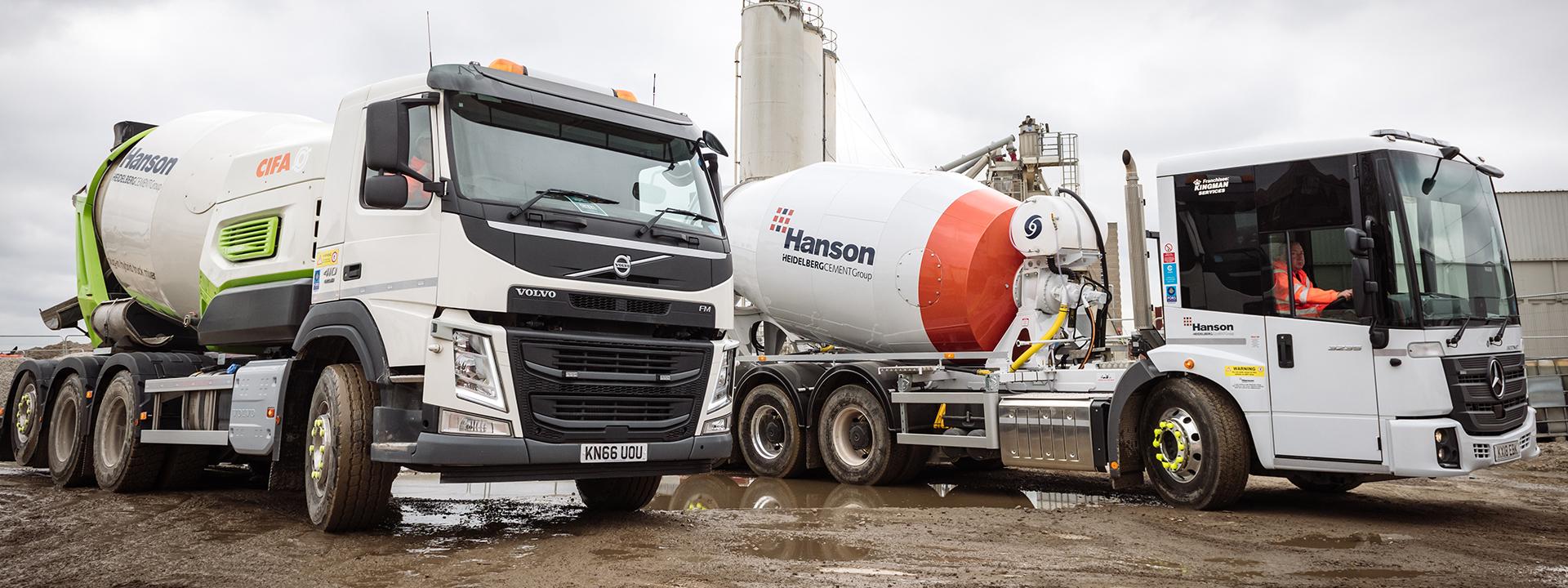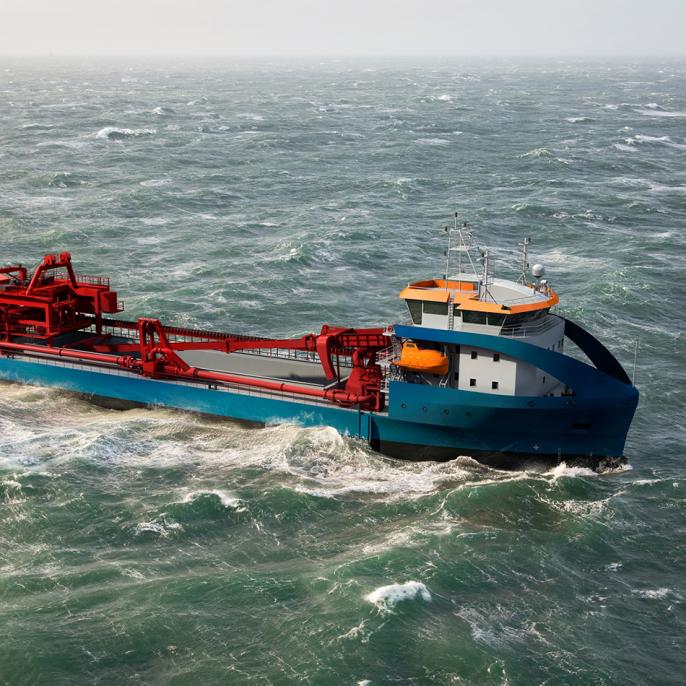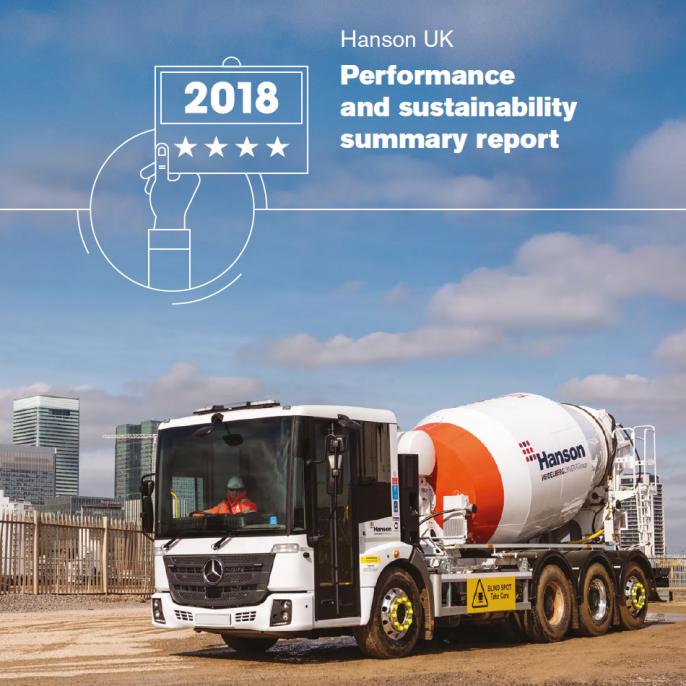CO2e emissions from transport
CO2 emissions from transport on a per tonne basis rose by one per cent during the year. This was principally due to an increase in delivery distances for aggregates and asphalt. We are looking at new metrics for monitoring the carbon and energy efficiency of our delivery fleet as the traditional measure such as fuel consumption and CO2 per tonne delivered can mask improvements in performance as a result of increased activity.
We now have a higher percentage of our own vehicles meaning we can track fuel use more accurately and provide fuel efficiency training for all our drivers. Rail deliveries increased slightly for both aggregates and cement.
A project to optimise order handling and vehicle scheduling in the aggregates, asphalt and concrete business lines is ongoing. The aim is to improve vehicle use and reduce fuel costs. The project is focused on the effective and efficient use of our delivery fleet through the introduction of vehicle optimisation software, GPS and a material resource planner (MRP) to schedule internal deliveries.
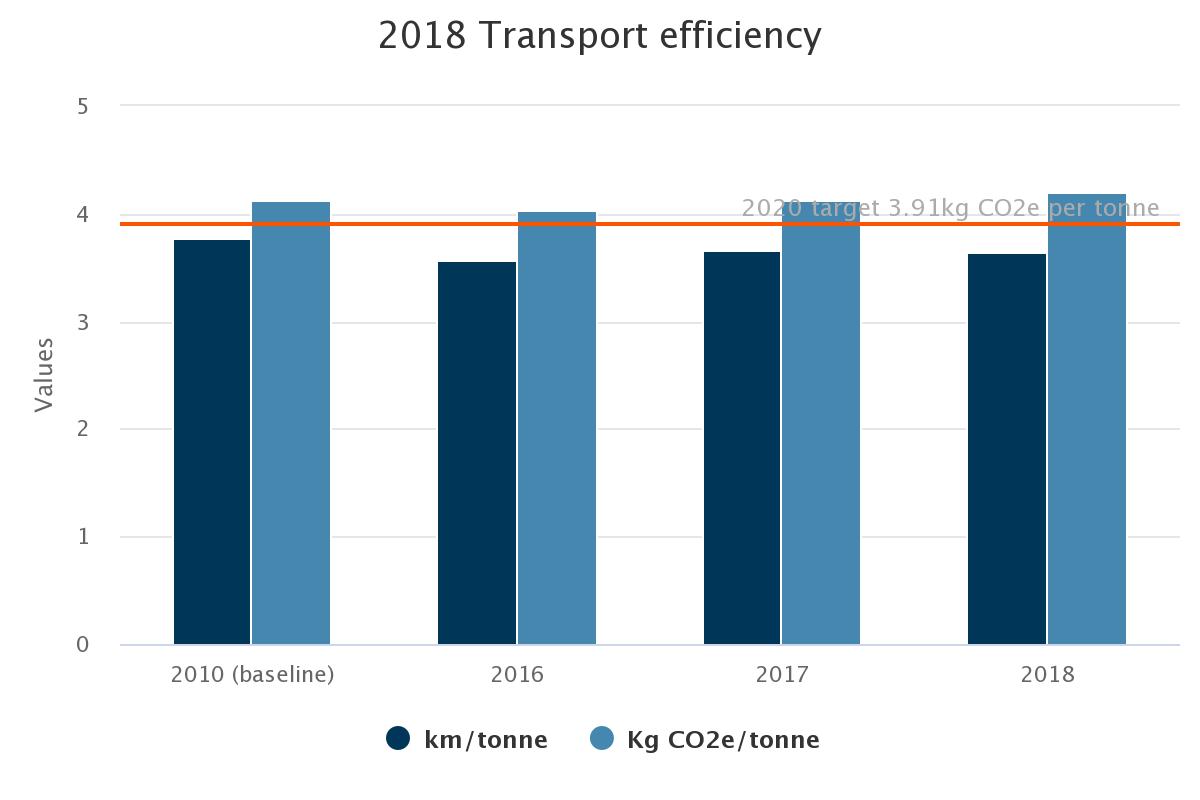
-
Transport efficiency
2010 (baseline)
2015
2016
2017
Tonnes delivered
29,529,302
28,473,246
30,027,466
28,736,731
kg CO2e / tonne
4.12
4.09
4.03
4.07
Total distance travelled km
111,580,638
103,660,621
107,116,583
103,579,170
Tonnes CO2e / year
121,589
116,435
120,878
116,835
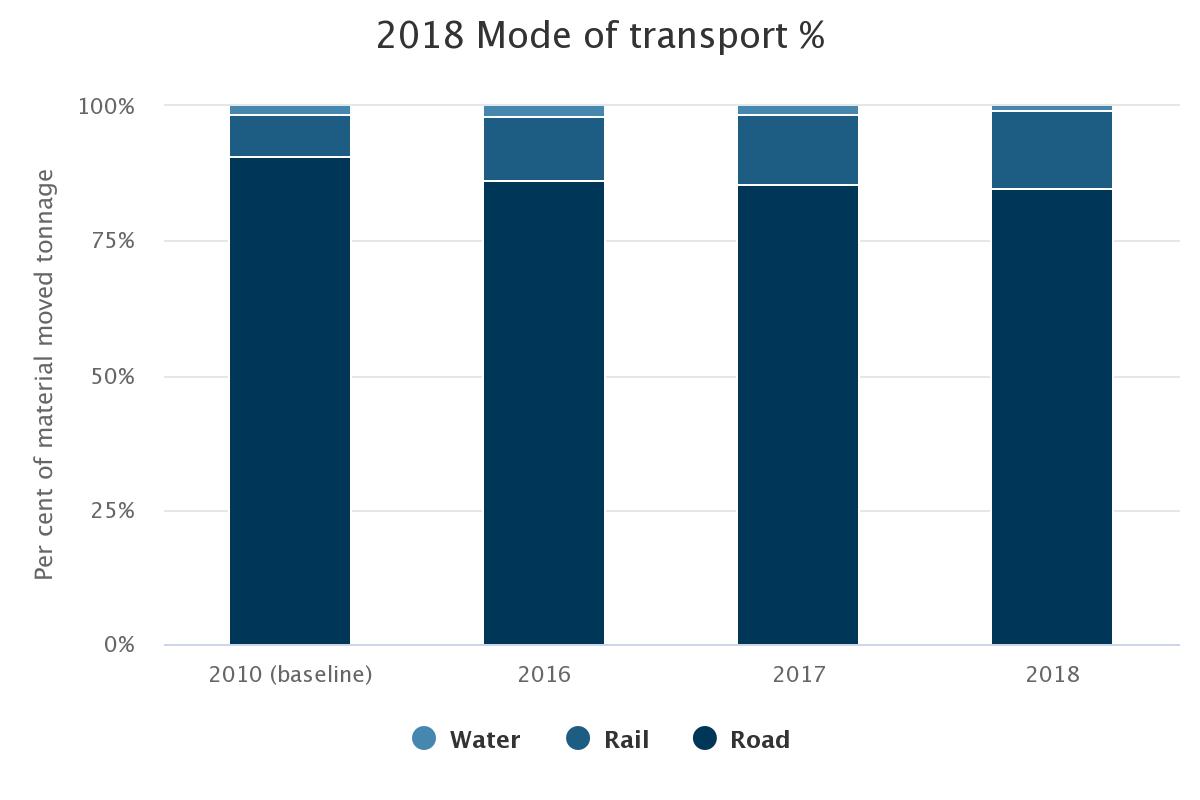
-
Mode of transport
2010 (baseline)
2015
2016
2017
Road
90.78
86.55
86.13
85.78
Rail
7.91
11.45
11.89
12.71
Water
1.31
2.00
1.98
1.50

